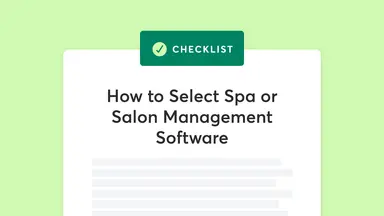Spas are now stretched thinner than ever, so how do you balance your bottom line while also providing fair salaries or compensation for those in support roles?
Your support staff is critical
In delving into current compensation practices for spa and wellness center employees, it makes sense to start at the beginning of the service delivery cycle—our customer service and support staff members, the first and last point of contact for our guests.
These all-important employees are expected to answer the phone with a smile, demonstrate intimate knowledge of the service menu and entire product range on offer, check guests in and out, provide tours, upsell treatments, anticipate what the guest is looking for, maintain public spaces, and sometimes suffer undeservedly at the hands of both guests and other staff members. They need to do this all while looking their best, wearing a permanent cheerful smile, and making less income than their service-provider colleagues.
It has always been difficult for employers to find staff for these positions, which, either in a hotel or day spa, are often steppingstones to more career-building roles. Also, in today’s gig economy, it has become harder than ever to attract staff and keep these vital roles appropriately staffed.
Should you pay hourly wages or offer a salary?
These employees are typically paid an hourly rate, which is relative to the pay in a retail or entry-level hospitality job in the region. As of the writing of this article, the US federal minimum wage is $7.25 per hour. However, many states, and some cities, carry a minimum wage that is often much higher. The effective nationwide minimum wage (the average across the country) was $11.90 in May of 2019. Obviously, there is a big difference between $7.25 and $11.90 per hour (about 60%!), but this is the range you start with when figuring your support staff wages.
Balancing costs with a need to attract talent
When planning and forecasting, you’ll need to take into account not only just the local minimum wage standards but also how much more than that you can afford to pay—while keeping your costs under control. In some urban areas, such as Los Angeles and New York City, the minimum wage is already at or approaching $15 per hour, which is pushing the boundaries of affordability for the average spa.
However, as mentioned earlier, in service positions with direct client interaction, either in person or on the telephone, minimum wage does not always afford you the type of well-rounded employee needed to be successful in these positions. Currently, in the aforementioned as well as other large cities, it is often necessary to pay between $18 and $22 per hour for quality candidates.
Thus, plans that pay a lower than “market value” base hourly rate, but have an upside in potential commissions of some sort, are now becoming popular. One common method in large resort spas is to charge clients an automatic gratuity, often as much as 20%, and while the lion’s share of that typically goes to the therapist, a few percentage points may be carved out and distributed to the support team.
Retail commissions can further incentivize support staff
Some additional pay for support staff can also be found with creative approaches to retail commissions. The standard industry retail commission on branded merchandise is 10%, which would usually go to the therapist. However, some businesses are taking 1% or 2% of these commissions and also distributing them to support staff. While this might put the commission to the service providers at 8% instead of 10%, the argument has been that, with some skin in the game, the support staff will close more sales for the therapists, and everyone is happy in the end.
How to distribute commission
When it comes to the distribution of any of these commissions amongst the staff, it is essential to have a clear formula that is fair and equitable. It's most common to divvy up a pool by hours worked (total available pool money/total support hours worked) and then distribute that hourly rate according to hours worked by each support staff member in the time period. However, some facilities will add other ranking criteria into the mix. Whatever your plan, just make sure it is clear and easily trackable.
Front desk associates versus spa attendants
One of the challenges when scheduling support staff is determining the right coverage. This is, to a degree, dependent on the specific position requirements. For instance, if in your spa the front desk staff will also be in charge of doing laundry, that will pull at least one of them away for periods of time from answering phones, booking future appointments, and checking clients in and out. This can obviously have a negative impact on revenue, leading to the potential introduction, especially in larger spas, of spa attendants into the mix.
A spa attendant typically does not have front desk duties; no answering phones or point-of-sale responsibilities, and thus has a somewhat lower hourly rate. Instead, the spa attendants will roam the spa, especially locker rooms, bathrooms and relaxation areas, neatening up, refilling refreshment bars, and facilitating room turnarounds. If you have onsite laundry capabilities, it makes sense to entrust these staff members with that task, as well as any others that are important to the client experience, while allowing the customer service staff to remain at the front desk. Spa attendant hourly rates will be closer to minimum wage than those in customer service jobs, but they may also be eligible to share in gratuity pools.
Of course, all of these positions are essential to the smooth operations of the spa. For planning purposes, it is typical to budget 10-12% of revenue for support staff and management compensation. This can be a challenge in areas with high minimum wage requirements.
Benefits for front desk associates
It is worth noting that, especially in the case of the customer service/front desk employee, these positions are now akin to working in any hospitality or retail position, and so offering some employee benefits will attract and keep higher-quality candidates. The most sought-after benefit is participation in a health care plan, but paid time off comes in a close second.
Of course, adding benefits to the mix adds more expense and must be carefully calibrated. Consider a small spa does $500,000 to $600,000 in revenue per year and has the full-time equivalent of 2.5 people at the front desk. Giving them each a week of vacation (2.5 weeks total) costs only 0.25% of the total revenue—a very affordable benefit. A contribution of even 50% towards the health insurance coverage for two full-time equivalent staff members (the 0.5 employee wouldn’t qualify as they're part time) would likely run the business about 0.5% of revenue—also affordable. While these features definitely require more effort and planning, they certainly pay off over the long run and help you to stand apart from competitors without any benefits when it comes to prospecting new staff members.
With the right base, incentives, and benefits in place, you can attract top talent without hemorrhaging cash. Consider revisiting the compensation for your support team on a yearly basis to stay competitive and ensure you're not spending too much. It's worth taking the time to make sure you've got it right.
Want a guide to compensation for service providers?
Read the Blog






